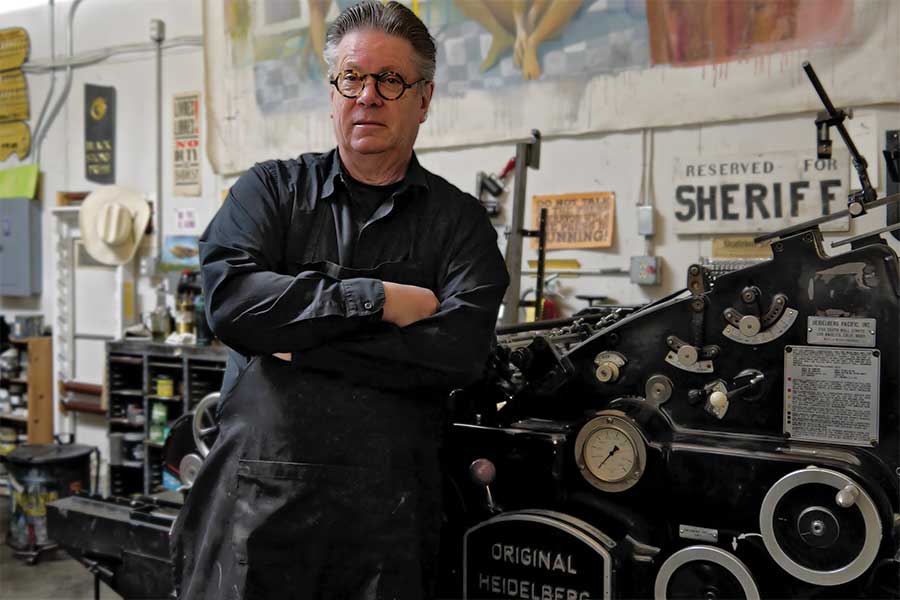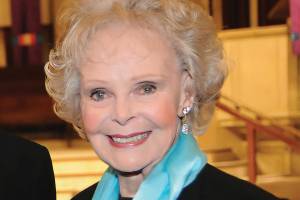By Aaron Parrett
World-renowned fine arts bookmaker and letterpress printer Peter Koch has recently helped inaugurate a printing arts program at the University of Montana in Missoula.
Koch was born in Missoula in 1942 into one of Montana’s pioneer families: his great-grandfather Hans Peter Gyllembourg Koch came over in the mid-nineteenth century from Denmark, and eventually became one of the founders of the University at Bozeman.
Raised by his grandfather Elers Koch in Missoula, Peter eventually graduated from UM with a philosophy degree, and promptly set out to travel the world, hitchhiking around Europe and North Africa. When he returned to Missoula, he discovered the allure of letterpress printing—that is, printing done on antique machines using real lead type. He scoured the state’s small newspaper shops, buying up old presses and equipment in the early 1970s as the old style was beginning to vanish and be replaced by “offset printing,” which was largely done with primitive computers and plastic.
In 1974, he set up the Black Stone Press on 3rd Street in Missoula, now occupied by Bernice’s Bakery. He printed poetry chapbooks and a quarterly magazine called Montana Gothic. “I realized I needed to find a mentor, and so left Montana in 1978 to apprentice with some of the great California printers, including Adrian Wilson,” he said.
Eventually he settled in Berkeley and began producing high-end artist’s books in exclusive editions, usually with a philosophical angle. His Herakleitos and The Fragments of Parmenides caught the attention of major reviewers in the world of book arts, and Peter Koch Printers became synonymous with the cutting edge of letterpress printing as an art form.
In his almost 50-year career, Koch not only produced dozens of fine arts letterpress books (some of which command upwards of $5000 a copy), along with his wife Susan Filter he also started the Codex Foundation, whose stated purpose is “to create an environment for promoting the book as a work of art.” That enterprise led to the Codex Book Fair, which is now the world’s largest book arts fair, held every other year in Berkeley.
Though he still devotes much of his energy to designing books, when he turned 80, Koch officially retired from running the presses himself. He continues his work promoting the book arts, and when he closed his print studio, he decided to donate some press equipment and type to the fledgling book arts program at the University of Montana. Now housed on campus in the University’s Schreiber Gym Building, Koch’s machines and equipment have returned home, where his printing legacy will continue, ensuring a vibrant future for the book arts. Peter lobbied for years to see his hometown and university become “a center for the book arts in Montana,” he said. His dream has now become reality. “And this building, this museum is the perfect place.”
Already the students and faculty at the press have made a mark in the world of letters, producing as their first broadside a poem by the American poet Kevin Young called “Russet.” Faculty associated with the new letterpress endeavor includes poet and professor Sean Hill, pressman and former English professor David Axelrod, and Medieval scholar Ashby Kinch.
In an age when lovers of literature fret about e-books replacing hardbacks, or the world’s general shift away from print culture, Koch is an evangelist for the book as a fine art. UM recently honored Koch at a celebration of his life’s work to coincide with the opening of the Museum, where he delivered a keynote address entitled, “Printing at the Real Lead Saloon.” In those remarks, he summarized his devotion to the book as an art form: “There are books that radiate light into the world—luminous objects that reflect the hands that made them. Everything depends upon the right relationship between an idea and its maker.” He has also frequently quoted from notebooks he has kept in a lifetime in the craft: “The total book is in every respect an expression of its content. The text, the typographic composition, visual concept, material substrate, binding structure, and printing techniques are powerful conductors of meaning.” MSN








